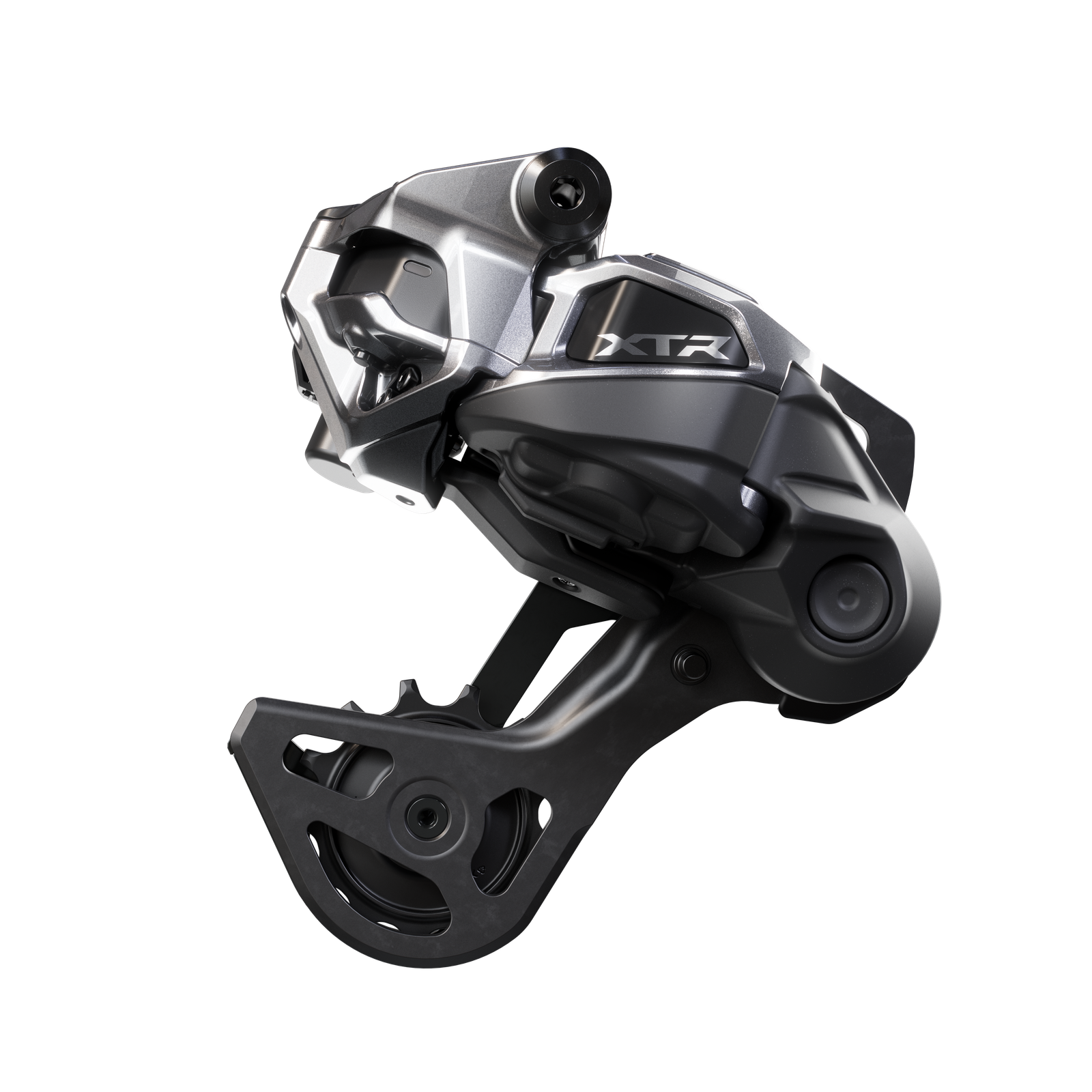
Shimano has finally gone wireless and made their batteries easy to access. No really.
We don’t usually pay too much heed to mountain bike product launches here at Cycling Weekly – especially on the day Campag launch its latest Super Record groupset – but the news that Shimano’s little-black-wire-supplier must be getting nervous is very exciting indeed.
It appears that Shimano may finally be ready to abandon the wired connection to the shift battery in its popular Di2 systems. Evidenced by today’s launch of the M9200 Di2 (XTR) rear mech, which is now powered by a removable battery mounted inside the mech.
And whilst this update could be bad news for electronic cable salespeople, what is great news for mountain bikers, could also be excellent news for road and gravel riders and the mechanics who build their bikes.
At the last major road launch – Dura Ace 9200 and Ultegra 8200 Di2 – we saw the current line of road groupsets debut with wireless shifters, but with remote batteries connected by cables to a battery mounted in the frame. Semi-wireless as it was called.
The Osaka Bay-based engineers had opted to retain the hard-wired connection to the front and rear mech via a battery stowed in the seat post. At the time, Shimano insisted that the larger wired battery was essential, saying; “this single internal battery ensures a stable and high voltage connection to the derailleurs, contributing to the brand’s fastest-ever shifting”.
What we do know from the XTR launch today, is that shifting is claimed to be faster than the outgoing XTR version, and that the predecessor was no slouch; so, presumably, battery mounted mech solutions are no longer slow or “unstable”.
The latest race content, interviews, features, reviews and expert buying guides, direct to your inbox!
Sram’s patents – long rumoured to be why Shimano hadn’t tackled the issue previously – could be a more likely reason. Shimano road and gravel groups just need to catch up now, surely?
For gravel riders, the clear move toward a beefier linkage in the XTR rear mech, and the chain control measures announced as part of the launch – a new double spring, presumably an upgrade to the current clutch mechanism – could also make for interesting reading, as we could see some of those ideas coming over into GRX and even road groups eventually, especially as Shimano seeks to close the gap on Sram’s UDH direct mount system, when it comes to off-road robustness in the rear mech.
Speaking of robustness, one final point of interest is the announcement of an Automatic Impact Recovery Function in the rear derailleur, where the mechanism moves in the event of an impact but then returns to its previous recorded position, resetting itself. The current crop of road and gravel-focused Di2 systems tends to enter a ‘crash mode’ after an impact, reducing operation – a little like a limp mode in a car – which can mean an inconvenient trip to the bike shop for a factory reset and a thorough check. A system that resets itself would be very welcome in the incident-prone gravel theatre, as well as in road applications.
For those hoping to see the back of Hollowtech II for their cranksets, I think we can safely count that out too. They’re clearly sticking with that system. Which, without the recent and widely reported – now historic – issues with the cranks failing, is still a decent system, marked by easy and reliable setup. For any roadies desperate for an extra sprocket in their rear cassette, Shimano fans probably shouldn’t get their hopes up – the XTR launch is 12 speed. For them to go 13 on just road groups now seems less likely.
Today’s XTR launch includes a ton of other MTB stuff of course – for example a new four pot caliper option which will almost certainly have the baggy short brigade standing atop their Ford Raptors, spraying cans of Red Bull all over the gaff – but the big news for us here is that anyone with a penchant for lycra – pockets in their bibs or not – should certainly be keeping an eye on what happens next at Shimano, especially as regard to whether they will or won’t call time on those little black wires…
(Image credit: Shimano)

